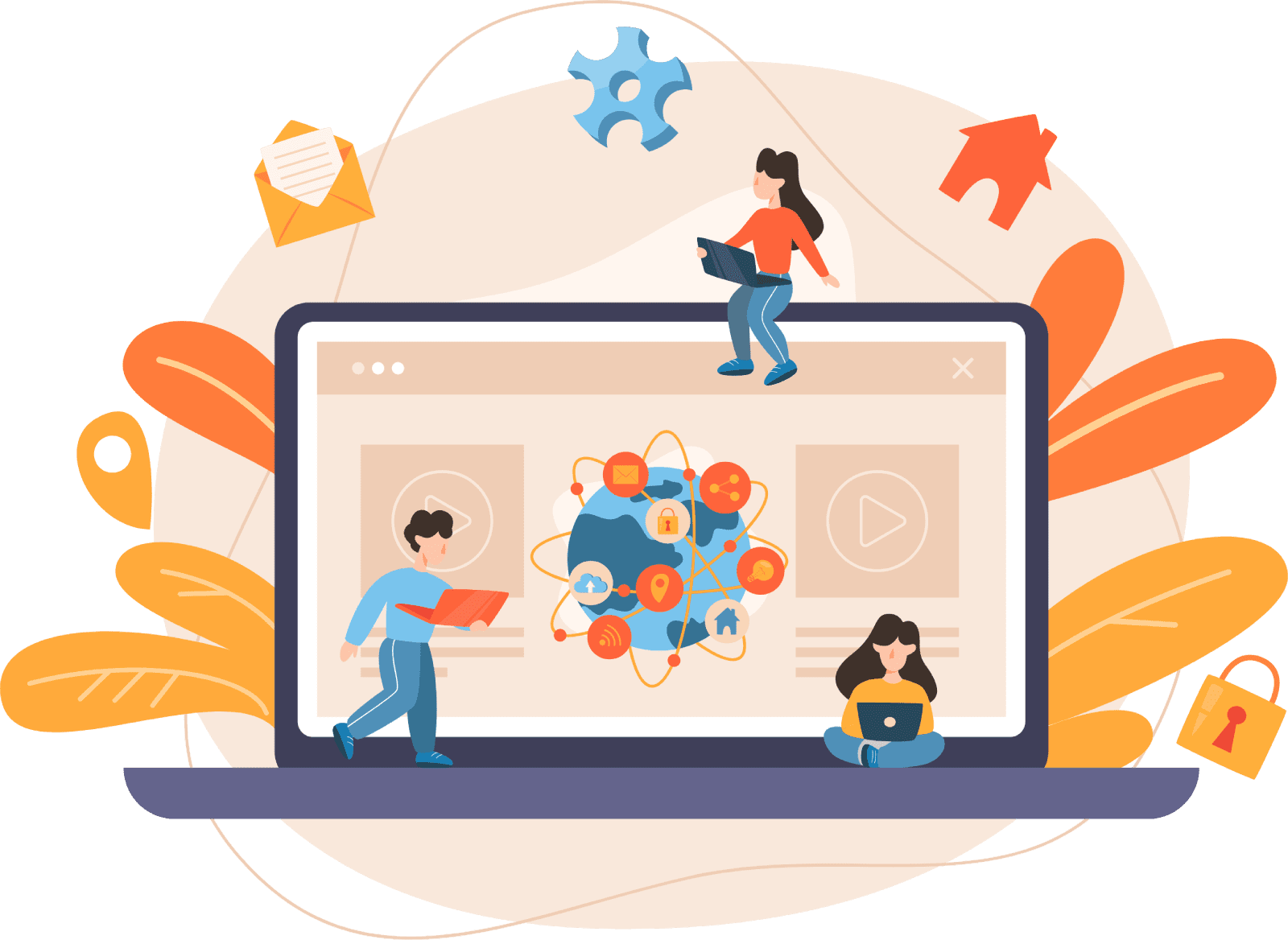Full Stack Java Training
Job Oriented Intensive Program
Empower your coding skills with the help of Quality Thought’s Fullstack Java Training! Learn to master Java, front-end, back-end, and cloud technologies under the direction of experts and hands-on projects. You will be a job-ready full-stack developer after this full-stack Java Training Course to orientate in the world of tech.
Contact : +91 9160187346
Register For Free Demo
Full Stack Java TrainingUpcoming Batches
Date:
24th October
Time
10:30 AM TO 06:00 PM
Program Duration:
120 days
Learning Format:
Training
Course Curriculum
Date:
24th October
Time
10:30 AM TO 06:00 PM
Program Duration:
120 days
Learning Format:
JOIP/I&I
Course Curriculum
India’s #1 Software Training Institute


Master in Full Stack Java Training Overview
Acquire mastery over Java, front-end, back-end, and cloud with Quality Thought's Full Stack Java Training course. Take a practical route, get expert guidance and real-world skills for the full-stack developer's route.
KEY HIGHLIGHTS
Master Java, front-end, web frameworks, and databases through hands-on projects and expert guidance.
Put your learning to practice through engaging, real-world industry challenges.
Take your skills up by learning with others, in a supportive environment.
Practical, industry-oriented case studies in real-world problems

Comprehensive Training
- 2 Hours Training
- Industry Curriculum
- Learn from the Practitioner
- Experimentation Learning
- Course Completion Certification
- Education Loan
- Experience Industry Faculty
- Dedicated Placement Team
Full Stack Java Training Course Key Features
- Real-World Projects - Experience real-world industry-relevant projects
- Personalized Attention - The guidance is one on one from mentors.
- Career Counseling - You get tailored advice for entering the tech space and climbing further.
- Placement Assistance - Dedicated professional guidance for getting the best job placement.
- Lab Facilities - Sophisticated labs where learning can be thoroughly done.
- Online Learning - Easily accessible, interactive classroom for online classes. Learn anywhere, anytime.
Skills Covered
- Agile, Java, API Testing with Postman, TDD with TestNG, AWS, JDBC
- Learn core computer science concepts from leading industry experts with content structured to ensure industrial relevance
- Build an end-to-end application and test it with exciting features
- Earn an industry-recognized course completion certificate

Skills Covered
- Frontend ;- Html, CSS , Javascript, Bootstrap, ReactJS
- BackEnd ;- Core Java, Advanced , Spring Boot, Microservices
- DataBase - Oracle, SQL / PLSQL
- Cloud - AWS

Offered Programs
Exclusive Training
- Any Graduate
- 2 Hours Training
- 60 Days
- Real Time Faculty+
- Lab Assistant
- 3-4 Months Training
- 2 Mock Interviews
- Support With Resume Preparation
- Reference Of Job Openings
- Training Completion Certificate
- Course Fee: 30,000
JOB ORIENTED INTENSIVE PROGRAM (JOIP)
- Any Graduate
- 6 Hours Training
- 3-4 Months
- Soft Skills Training
- Aptitude Training
- Real Time Faculty Team (Group Of Working Professionals)
- Training-3-6 Months,Every Week 1 Day Project Support Until Student Gets A Job
- Continuous Sprints Support
- Monthly 2 Mock Interviews Until They Get A Job
- Get Access To 10 Live Resumes
- Up To 3 Live Projects Training
- Training Completion Certificate
- Dedicated Placement Officer
- Course Fee: 60,000
INTENSIVE & INTERNSHIP PROGRAM (I&I)
- Any Graduate/Any Qualifying Year/Gap
- Internship With Real time Environment
- 6-8 Hours Training, 4-6 Months
- Aptitude Training
- Soft Skills Training
- Project Environment From Day 1 Until The Student Gets Placed
- Project Experience Until Student Gets A Job
- Two Weeks Once Mock Interview
- Get Access To 10 Live Resumes.
- Up To 3 Live Projects Training
- Internship Certificate From Client
- Dedicated Placement Officer
- Course Fee: 65,000
Pre Requisites
- Basic programming knowledge: Familiarity with the coding.
- Understanding of HTML/CSS: Basic knowledge in web development
- Knowledge of OOP principles: Basic concepts of Object-Oriented Programming
- Basic knowledge of Java: Good to know, but not necessary
- Problem-solving mindset: Logical approach in solving coding problems.
curriculum
01: Core Java
- class
- object
- Data Hiding
- Abstraction
- Encapsulation
- Is-A relationship
- Has-A relationship
- Types of inheritance
- Method Overloading
02: Oracle
03: Advanced Java
04: Java Framework: Spring Boot
05: Java Framework: Spring Micro-service
06: CSS-3
07: JavaScript
08: React/ReactJS
- React Introduction
- Advantages of React
- JSX Introduction
- Expressions in JSX
- JSX elements
- React virtual DOM
- First application development in react
- React project structure explanation
- React Fragment
- Components in React
- Function component vs Class component
- Props
- State
- Composing component
- CSS in React
- Type checking in props
- ReactJS vs React Native
- ReactJS vs AngularJS
- Event Handing in React
- Update state using event handling
- Phases of components in react
- Life cycle methods in react
- Hooks introduction
- Predefined hooks
- Custom hooks
- React Router
- Lists in React
- Key in React
- Assets in React
- Bootstrap in React
- React Forms
- Axios
- ReactJS + NodeJS + MYSQL database integration
- React Redux
Why Choose Quality Thought
100% Success Rates in the Placement for Skilled People
- Millions of learners join a thriving community of successful graduates advancing their careers
- Cutting-edge courses access the latest industry trends and technologies.
- Creative learning: Innovative approaches to make complex concepts simple and enjoyable.
- Career guidance: Placement help, resume building, interview preparation
- Happy moments: Several graduates achieved their desired objectives through the nourishing training program
A gate way to your🤔 Bright Future in the IT industry
Connect with us for Life-changing opportunities
Testimonials
Quality thoughts coaching centre offers excellent, structed programs that truly enhance your skills and knowledge , Good coaching institute for java full stack course
Radhika Namana
The customized mentorship and practical projects hammered Java and front-end development into me much sooner than I ever thought possible!
Randheer Reddy.
Career guidance and placement support at Quality Thought were truly outstanding. I am working at a dream company in the tech space!
Vikram Yadav
The course was very engaging with practical projects. The mentorship from the experts built my confidence to succeed in the tech industry!
Sunita Iyer
Key Facts Of Quality Thought

Job Oriented Intensive Program (JOIP)

50000+ Students Trained

15000+ Students Placed at Different Levels

Training by Realtime Industry Experts

Tie Up With 250+ Compaines

Educated 15+ BPO & Back Office/Ops on IT Trends
Certification
-
Quality Thought’s Full Stack Java Certification Process:
Quality Thought will provide a certificate to the students who completed their Full Stack Java training.
The certification will be provided within one week of the training completion.
The certification will be given to the students who have completed their projects and assignments on time.

Frequently asked questions
What kinds of job roles can I look at after finishing a Java Full Stack course?
Graduates can work in a lot of different areas; some examples are Java Full Stack Developer, Web Developer, Software Engineer, or even Back-End Developer, either in web applications or enterprise-level applications.
Is the Full Stack Java Developer right for me?
Yes, it is a great career because there will always be demands for developers that would be able to serve as not only front-end developers but back-end developers as well.
Average income for Full Stack Java Developer?
On average freshers earn about ₹ 5L to ₹ 10 lakhs per annum depending on companies, locations, skills, and sizes.
API development? Important! So, is deployment and version control systems like Git. Success in this job? It’s about combining different technologies, paying close attention to detail (and solving problems).
Which technologies are taught in a Full Stack Java course?
The four areas of study include Java/Spring Boot, REST APIs, front-end (jQuery/React/Angular), and databases (SQL/NoSQL/Oracle) DevOps toolsets.The demand for Full-Stack Java Developers still stays high as more businesses look for folks who can handle whole projects. Because of this, it’s a fulfilling career that you can stick with for years & years.
What does a Java Full Stack Developer mean?
A generalist with Java development experience and skilled with front-end and back-end frameworks and technologies HTML, CSS, and JavaScript.
Ready to get Full Stack Java JOB?



